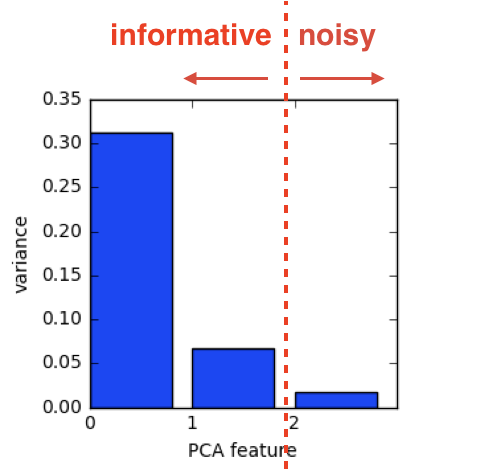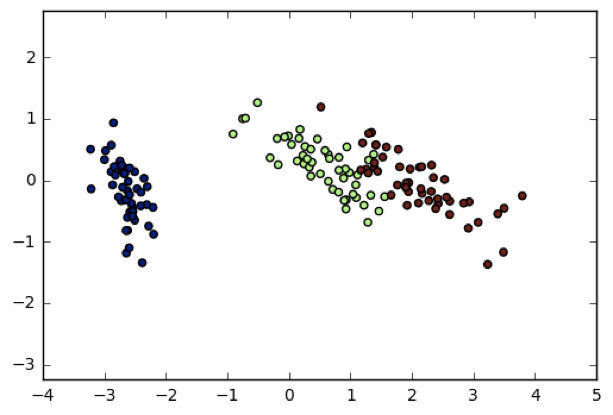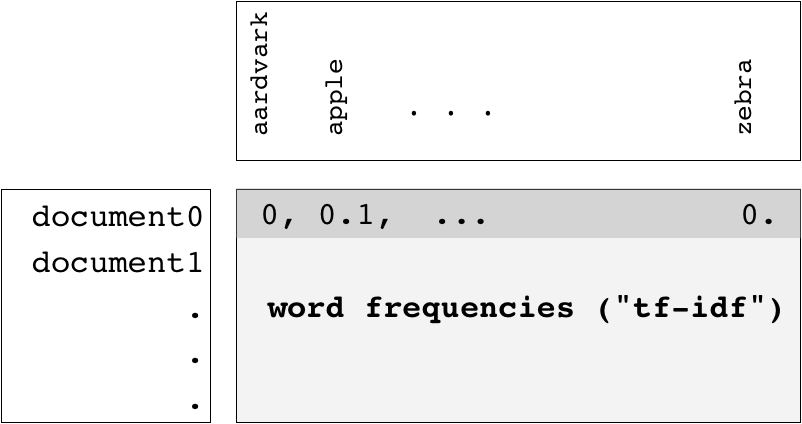Dimension reduction with PCA
Unsupervised Learning in Python

Benjamin Wilson
Director of Research at lateral.io
Dimension reduction
- Represents same data, using less features
- Important part of machine-learning pipelines
- Can be performed using PCA
Dimension reduction with PCA
- PCA features are in decreasing order of variance
- Assumes the low variance features are "noise"
- ... and high variance features are informative

Dimension reduction with PCA
- Specify how many features to keep
- E.g.
PCA(n_components=2) - Keeps the first 2 PCA features
- Intrinsic dimension is a good choice
Dimension reduction of iris dataset
samples= array of iris measurements (4 features)species= list of iris species numbers
from sklearn.decomposition import PCApca = PCA(n_components=2)pca.fit(samples)
PCA(n_components=2)
transformed = pca.transform(samples)
print(transformed.shape)
(150, 2)
Iris dataset in 2 dimensions
- PCA has reduced the dimension to 2
- Retained the 2 PCA features with highest variance
- Important information preserved: species remain distinct
import matplotlib.pyplot as plt
xs = transformed[:,0]
ys = transformed[:,1]
plt.scatter(xs, ys, c=species)
plt.show()

Dimension reduction with PCA
- Discards low variance PCA features
- Assumes the high variance features are informative
- Assumption typically holds in practice (e.g. for iris)
Word frequency arrays
- Rows represent documents, columns represent words
- Entries measure presence of each word in each document
- ... measure using "tf-idf" (more later)

Sparse arrays and csr_matrix
- "Sparse": most entries are zero
- Can use
scipy.sparse.csr_matrixinstead of NumPy array csr_matrixremembers only the non-zero entries (saves space!)

TruncatedSVD and csr_matrix
- scikit-learn
PCAdoesn't supportcsr_matrix - Use scikit-learn
TruncatedSVDinstead - Performs same transformation
from sklearn.decomposition import TruncatedSVD
model = TruncatedSVD(n_components=3)
model.fit(documents) # documents is csr_matrix
transformed = model.transform(documents)
Let's practice!
Unsupervised Learning in Python

